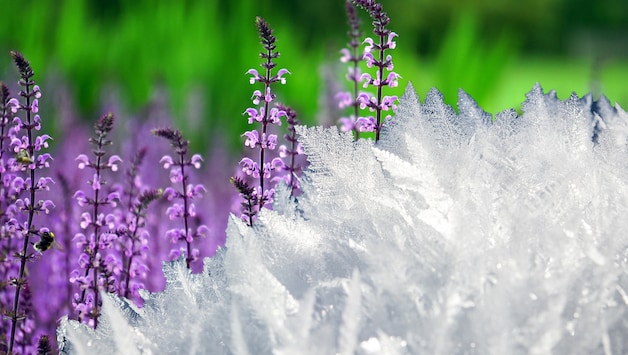Cold Sophie has a permanent place in the calendar. She is commemorated every year on May 15th. It marks the end of the cold season and keeps farmers and hobby gardeners busy alike.
The wonderful month of May often has spring temperatures at the beginning of the month. However, these are often interrupted by five ice saints in mid-May. Cold Sophie ends the phase in which ground frost can occur again. She is the only woman among the weather saints, known in some places as ice men.
For many centuries, people noticed how the May frosts always repeated themselves in the middle of the month. She arrived on time on May 11th and said goodbye with Cold Sophie four days later. They recorded their observations as early as the time of the Julian calendar. The one created by Julius Caesar in 45 BC. However, the calendar introduced in 1582 was replaced by the Gregorian calendar. Since then, Cold Sophie has fallen on May 27th.
A match to today’s date is no longer as accurate as it was in the times of our ancestors. If you look at the original date, the Ice Saints brought a cold front across the country from May 11, 2020, which brought night frost throughout the week. It looked similar a year later.
May 2022, however, was completely different. This time the Ice Saints could have safely been renamed Hot Saints, because they brought the first heat wave. Cold snaps are now occurring throughout the entire month of May. The weather phenomenon can be at the beginning, in the middle or even at the end. The temperatures also vary. However, widespread night frost is now rare.
Even if climate change has taken the intensity away from Cold Sophie and her fellow campaigners, you shouldn’t put your plants outside too early. Popular belief teaches that spring weather only remains reliable after Cold Sophie has passed.
From a meteorological point of view, the weather event is caused by the interaction of various air currents and pressure areas that often occur in Central Europe: warm air masses from southern regions meet cooler air masses from more northern areas. This phenomenon can lead to a sudden drop in temperature. Agriculturally, Cold Sophie can be problematic because it can threaten sensitive plants that have already been stimulated by the previous spring warm cycle. Winegrowers and farmers must therefore be prepared for such weather changes and, if necessary, take measures to protect their crops.
Even if there is no empirical weather data on the Ice Saints, many farming rules still apply today. It is wise not to move frost-sensitive plants outdoors until after Cold Sophie.
“Never plant before cold Sophie” warns very clearly not to put plants in the garden or on the balcony before the last frost. Other examples of this warning are: “Sophie is called the cold one because she likes to bring cold weather” or “You are not safe from night frost – until Sophie passes”.
Two other farmer rules fall into this category: “She is called Cold Sophie because she often comes running with cold” and “Sophie often brought frost and killed many a plant.”
“Cold Sophie sows flax to prosper.” This rule encourages creating the right conditions for flaxseed to thrive. Planting in front of Cold Sophie is not recommended.
“The cold Sophie, she likes to bring a downpour at the end.” This rule reminds us to keep an eye on the humidity in mid-May. Plants that can only tolerate a little water should remain indoors.
A man orders a pizza to take away in Rimsting in Bavaria, but wants to eat it in the pizzeria. The innkeeper asks him to leave. What happens next is incredible.
The influx of tourists in many destinations is taking drastic proportions. Traveling is increasingly becoming a basic need. Locals are annoyed by the crowds of holidaymakers and are protesting. A tourism expert explains what this means for holidays in popular regions.









